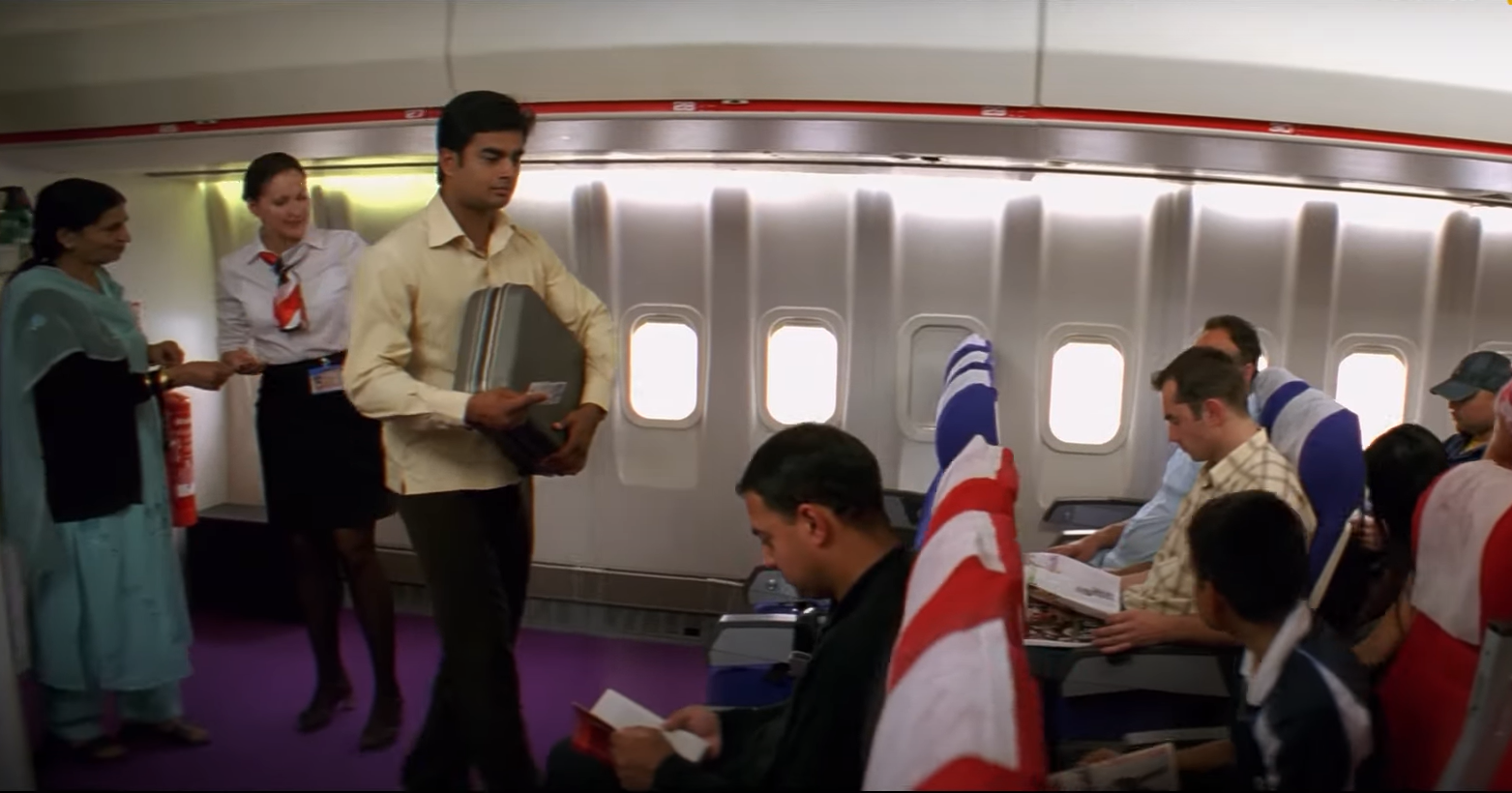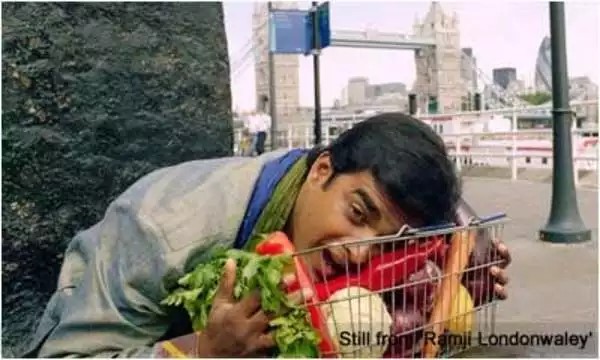A food writer watches a movie about a cook, and gives us his hot take.

In ‘Ramji Londonwaley,’ a 2005 Hindi movie, more than the food, it’s the status of the cook that leaves much to chew over.
Watching a movie to look for its culinary talking points may seem like an endeavour that is set up for failure, but a close reading of anything is always interesting for what it throws up. In this case, there was much that made an impression.
First and foremost was the status of a male cook. In the village of Takipur, Ramji Tiwari (R. Madhavan) whose father has passed away makes ends meet by making food. Tasked with earning enough to marry off his sister, he knows that besides a grand celebration, he will also be preparing the dishes being served to the guests. Tellingly, his sister’s father-in-law has told his guests that Ramji is a farmer, even though it seems that he owns no land. Clearly, it’s better to toil in the heat than to measure out spices in the kitchen. However, it is this same kitchen prowess that takes Ramji to the UK, and allows him to cook in an all-male kitchen. Chefs, both in real and reel life, have seemingly always been men, while the unpaid labour of women – wives, mothers, grandmothers – is often overlooked. It’s only now that change is afoot, albeit gradually.
This ability to use sustenance as a medium for emotions is something that gives the plot its central heart.
In the 18 years since the movie was made, there’s been a sea change in how food-centric stories are shot. In this film, besides a close-up of a hand running through some sugar, there is little in the way of food-based visuals. At least the kind that make the viewer hanker for a trip to the market. Sure, conversations take place around tables set for meals and there’s a trip to the grocery store, but the visuals never immerse us in any kind of culinary landscape. One particular plot thread has Ramji being entered into a recipe competition for his sugar-free gajar ka halwa, and when we see the final dish, it’s presented like a 1950s dessert. The halwa is pressed into a circular shallow bowl, with a border of pistachios and orange slices and carrots pieces arrayed around the rim of the dish. It looks neither appealing, nor like halwa, but given that it’s less than five seconds on screen, it doesn’t matter. Contrast this with how Instagram has changed our approach to dining visuals – with 360-degree shots and thoughtful styling. Now, pop culture drives consumers to order the dishes seen in a film – most memorably with ‘Chef,’ and its Cubano sandwiches. Even at a house party where Ramji interacts with his future wife for the first time, the kitchen is full of food, and while some of it is familiar (the crisp puris in a bowl stand out), once again, the food is an assemblage of dishes rather than anything approximating an actual meal.

The only other time we are shown food on screen is when it’s used for religious purposes when our hero is the subject of a racist attack while sitting by the lakeside. He’s there to conduct a puja for this dead father, and one of his pinda (rice ball) is purposely squashed underfoot by local residents, leaving Ramji aghast. And yet, while some beliefs are upheld, others he’s less rigid about. To win over his wife, he makes a fish dish, which he’s never done before, having grown up vegetarian.
This gets us to perhaps the heart of the movie, and cooking in general. In South Asian/Indian culture, food transmits feeling. The joke on Instagram is that Asian mothers cut fruits to show love. And for Ramji too, making the fish is an act of love – trying to win his wife over after he’s already made another food-based mistake. The previous day, seeing that she had no time for breakfast, he left an open bottle of freshly squeezed orange juice in her bag, and by the time he came back with the cap, she had left. This ability to use sustenance as a medium for emotions is something that gives the plot its central heart. Ramji cooks because he loves it, but also because he wants to say more than he can in words – his Bihari-accented Hindi doesn’t let him be effusive or warm. That’s where his food does the work – he makes the sugar-free gajar ka halwa for his wife’s grandmother first, to thank her for everything they’ve done. At this point, it’s time to mention he’s in the British equivalent of a green-card marriage, with his wife and grandmother-in-law tolerating his presence at home.
What the movie does presage is how so much urban India values independence over being taken care of. No one wants to have food made especially for them, especially with the convenience of delivery apps and the splintering of joint families. Watching the movie today, it is a time capsule of a certain era, before slick visuals were available to everyone. At its heart though, its belief that food can be the vehicle for more than just sustenance is what gives the movie its timelessness.

